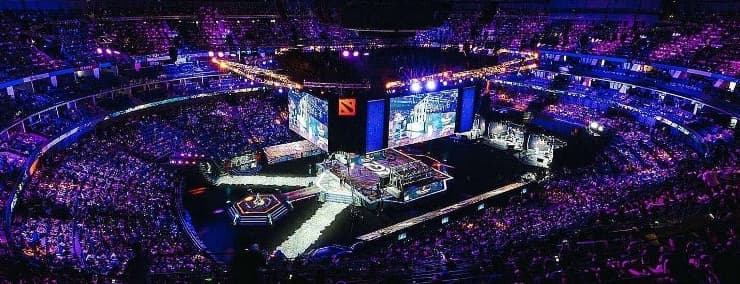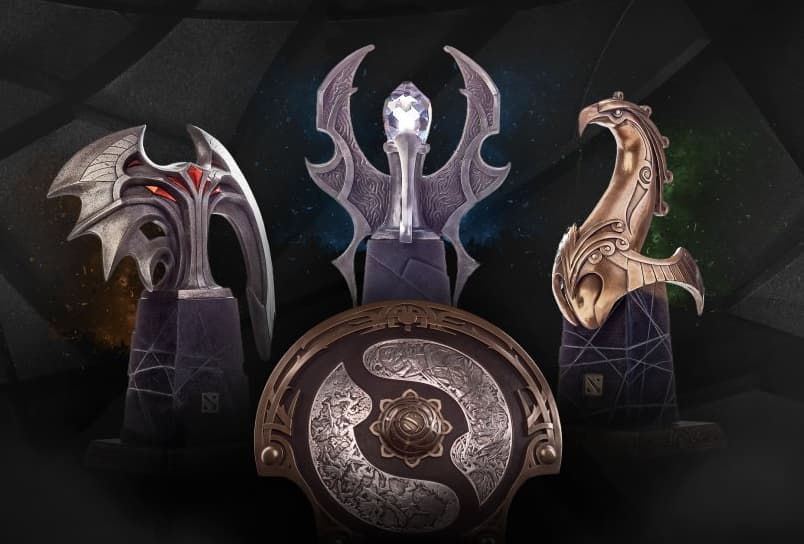If you’ve been following the Dota world for at least the last couple of years, you know that until 2023, Valve used the Dota Pro Circuit to determine which teams received direct invitations to The International. This was the system of collecting points through Majors and other events to get to the main Dota 2 Tournament. However, DPC is now officially discontinued. Let’s talk about why, when, and how it affects the game.
What Happened to the Dota Pro Circuit?
In September of 2023, Valve officially announced that the DPC era had ended and the International of 2023 would be the last in this format. Viewers and Dota 2 fans got the message through the blog on the official website. It was direct but didn’t introduce any replacement structure. The future was open and unknown.
Why Did the Dota Pro Circuit End?
Of course, Valve did not provide the public with any official statement on the reasons for the end of the DPC. But those of us who have been watching the championships and teams for a long time understand that the DPC format, especially regional play, was considered boring for some time. Viewers waited for Majors and bigger tournaments.
Additionally, there was a lot of speculation and rumors surrounding the DPC, mostly regarding the system being somewhat unfair to Tier 2 teams. Climbing from Division II to TI took multiple seasons and offered low prize money.
How Did it Affect the Pro Scene?
Those who felt the changes the most were the professional players, especially those who had previously had fewer chances on the pro scene. Players and teams can now qualify for big tournaments directly, even if they’re not in a structured league. This means that newer teams or rebuilt rosters have more chances to break into the scene, rather than waiting an entire Tour cycle.

Pro players can also benefit from the freer system that has opened up. Without Valve spreading DPC prize money thin across all leagues, organizers can focus rewards on headline tournaments. This means that a number of events have significantly increased their prize pool.
| Aspect | DPC Era | New Format |
| Tournament Structure | Rigid: 3 Tours/year + Majors, set schedule. | Open, flexible: tournaments can happen anytime, and formats can vary. |
| Path for Semi-Pros | Strict ladder: Open Qualifiers → Div II → Div I → Major | Open qualifiers in 3rd-party tournaments. More open. |
| TI Qualification | Based on DPC Points from league/majors. | Return to direct invites + open qualifiers — more suspense and debate. |
| Diversity of Formats | Limited. All Tours and Majors had nearly identical structures. | Varied: Swiss, groups, double elim, new broadcast styles, etc. |
| Tier 2/3 Scene | Struggled under DPC: only the top 1–2 teams in each region got real exposure. | More opportunities from 3rd-party events, qualifiers, and region-inclusive formats. |
The new system allowed newcomers to break through and Tier 1 teams to feel great. Unfortunately, Mid-tier teams are feeling the worst so far. All they gained was fewer resources, exposure, and stability. We’ll see how Valve deals with this situation.

Did the Changes Affect Regular Players?
It may seem that the format changes affected only the professional scene, but this is not so. The very nature of the game and the content that ordinary players and viewers receive have also changed. In a less systematic, but more interesting way. Already in the first year of the new format, the following changes are noticeable:
- The Community Tournaments have returned. Independent organizers (like ESL, BetBoom, Riyadh Masters, etc.) are running more open, hype-filled tournaments.
- Watchers notice more variety. Tournaments now feature surprise invites, qualifiers, and larger open brackets. With all events happening, viewers get around 160 hours of Dota 2 every week!
- Valve refocuses on the game itself. Valve returned to more in-game events and broader player engagement.
Honestly, for those of us who prefer to watch Dota 2, things became much more interesting. Yesterday, I spent some time on https://gg.bet/dota2 and understood that even placing bets became more thrilling. Especially with semi-pro teams and events. Now, you really need to know the game, teams’ tactics, and strong sides. Here is how I see the effect of the new era in Dota 2.
| Aspect | DPC Era | New Format |
| Casual Player Content | Low. Valve focused heavily on DPC, few Battle Passes, sparse in-game events. | Potential return of seasonal events, fun game modes, and cosmetics. Valve has more dev bandwidth. |
| Game Updates & Meta | Often aligned with the DPC schedule. Some metas felt stale between Tours. | Updates can come anytime. Valve has more flexibility to shake things up. |
| Viewer Experience | Predictable matchups, weekly regional leagues (some dull). | Big, exciting international tournaments with surprise matchups and storylines. |
| In-Game Engagement | Fewer community-focused features, lower hype outside TI. | Potential for more dynamic content, thanks to Valve shifting focus. |
